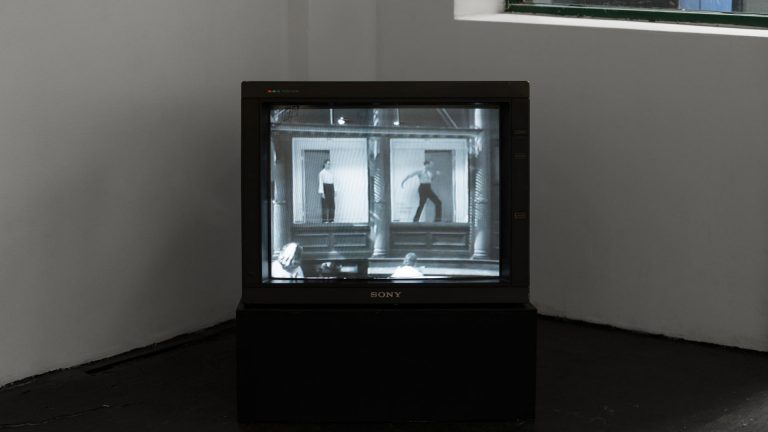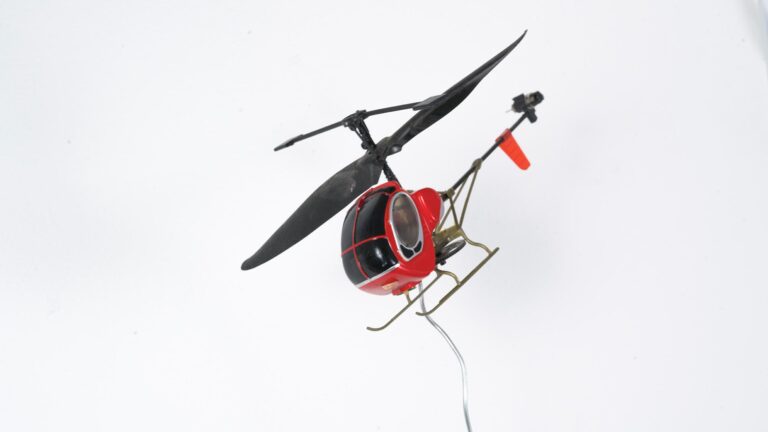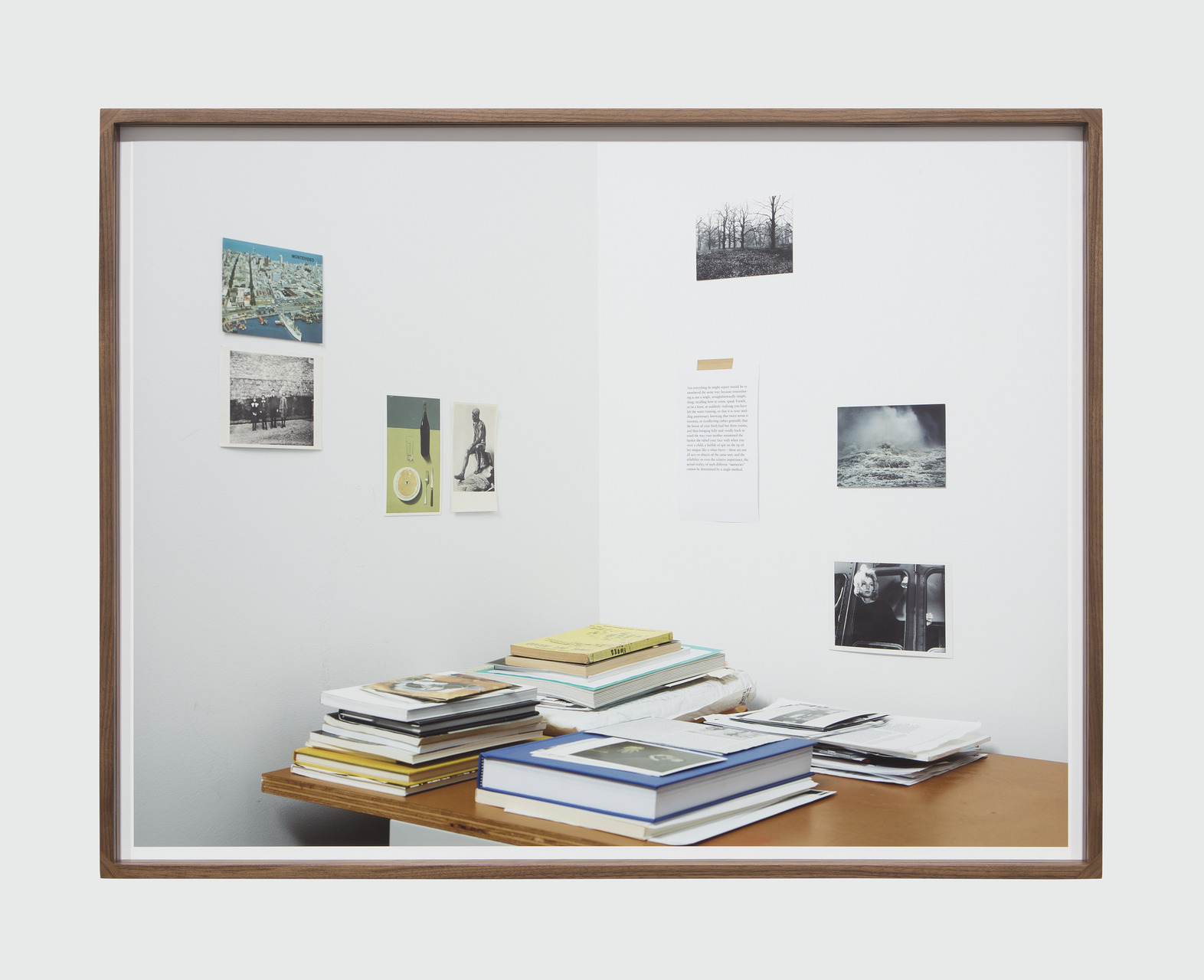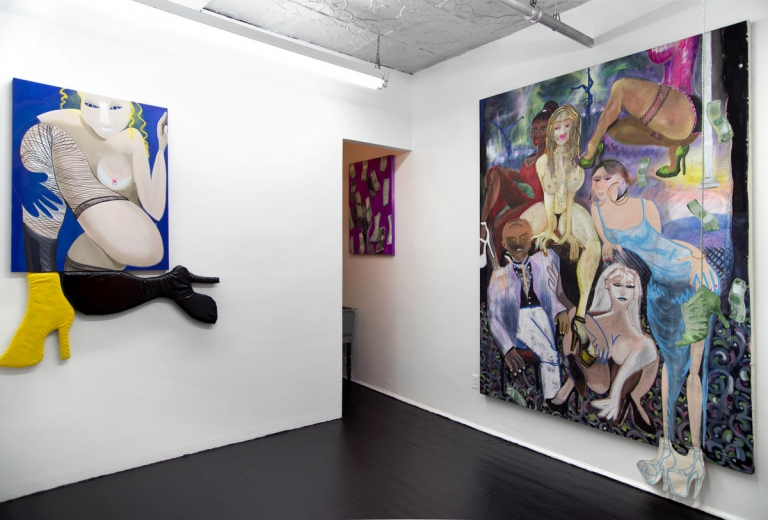Artist: Frederick Weston
Exhibition title: Happening
Venue: Gordon Robichaux, New York, US
Date: April 28 – June 16, 2019
Photography: all images copyright and courtesy of the artist and Gordon Robichaux, New York
Gordon Robichaux is pleased to present Frederick Weston: Happening, a solo exhibition of multimedia collage works and an installation of related archival binders, created over the past thirty years by artist and poet Frederick Weston.
In conjunction with Happening, Gordon Robichaux has curated a group show of artwork by sixteen artists in the smaller room of the gallery: Nayland Blake, Anne Collier, Lecia Dole-Recio, Eve Fowler, Daniel Marcellus Givens, Matthew Higgs, Ray Johnson, Elizabeth Karp-Evans, Lynn Hershman Leeson, Devin N. Morris, Lorraine O’Grady, LJ Roberts, Sur Rodney (Sur), Tabboo!, Andre Walker, and Shyvette Williams. This eclectic group of artists and works engage many of the concerns and ideas central to Weston’s practice—his use of appropriated images and objects; collage strategies; and exploration of representations of identity, desire, and the human body.
A selection of well-worn binders with handwritten headings on their spines—FEELINGS, BODIES, COLORS, KICKS, POLICE, BEDROOMS, GUNS, CARTOONIST, FRISBEE, FRUIT, PRISON—winds a path along the floor of the gallery. The collection is a small sampling of the archive of binders and file boxes that crowd Weston’s apartment, which is also his studio: “I make all my work in bed,” he says. Before moving into his current apartment in Chelsea, Weston lived in SROs and hotels all over the city—the Esquire, the Senton, the Roger Williams, and the Breslin—where a series of financial and emotional upheavals would lead him to “lose everything three times.”
From a very young age, Weston began articulating his own subjectivity by collecting and organizing a seemingly infinite breadth of visual materials with personal and cultural significance: images from magazines and newspapers of money, food, skin, holiday and religious imagery; toiletry and pharmaceutical packaging; photographs; fabric swatches; as well as duplicates made with Xerox machines. Weston utilizes his idiosyncratic, encyclopedic system to process, destabilize, and cope with a hierarchal, category-obsessed material world. This particular iteration of binders dates back to 1995, when Weston was diagnosed with AIDS, an event that would launch him on a path of radical self-love and anoint his commitment to himself as an artist.
A panorama of collages on foamcore boards reminiscent of those used for didactic presentations and elementary school projects encircle the gallery, expressing a range of ideas, rubrics, colors, vernaculars, histories, and ethics. Having trained in menswear design and marketing at the Fashion Institute of Technology, Weston looks to fashion—“the only true democracy that exists [since] everybody has to get up in the morning and put on an outfit that represents them”—as a pleasurable, expressive place of liberation where signifiers of race, gender, and class mix and match like paper dolls. A primary genre for Weston is the mood board, which he releases from the constraints of functionality into a staging ground for his multi-versal art. His use of quotidian materials and garbage, too, reflects his insistence on accessibility and artmaking as a democratic process: “I like using materials kids have access to, like when I saw Matisse’s Swimming Pool, I thought: Oh, he just cut paper; I can do that.”
Weston embraces collage for its immediacy as a fluid form of tactile poetry. Through his use of visual and textual alliteration, images and categories collide, cohere, rhyme, and fracture around a single color or cultural symbol, resisting synthesis or literal interpretation. Divorce from My Cowardice is a study in yellow of city walking, the passing of time, the pleasure of memory and loss: a Metrocard, caution tape, a condom, cut logos from old Gristedes and Virgin Records bags—“stores that don’t exist anymore.” Another board starts with green as an entry point for a reckoning with autobiography: swatches of camouflage, a favorite plaid shirt, Freddie the Frog (“I don’t like amphibians but I’ve been referred to as a frog”), Xeroxed photos of Weston as a young man, ginger ale packaging, pictures of Nina Simone and Miles Davis, foremost geniuses who were seen as “ugly black.” The Blue Bedroom Ballads/Blue Bathroom Blues series plays with the quiet velocity of blue: serene and cool oceanic images, cleaning products, medicine bottles, muscular bodies on the beach à la Tom of Finland, Yves Klein blue, “God is the color of water / God is the color of air.” The Sambo series probes the iconography of the Story of Little Black Sambo, which Weston loved as a child: images of blackface, tigers, Krishna, Indian children, black children, the Morton Salt Girl all coalesce into a complex and startling strategy for liberation.
Weston’s Body Map collages on irregular cut paper are silhouettes of life-size human forms traced from his and his friends’ bodies. The ongoing series of figurative works are populated with an array of images—faces, consumer products, flesh and skin tones—that fill, exceed, and animate each form. The works refer to pattern-making but stop in the phase of imagining, taking up similar themes as the other work in the show: the absurdity of labels, critique of racial categories and hierarchies, ecstasy of multiplicity, and the pleasure of being a person gifted with the language to celebrate, assess, and play within the world(s) we inhabit.
—Svetlana Kitto
Frederick Weston was born in Memphis, Tennessee, in 1946, and raised in Detroit, Michigan, where he participated in the club scene before moving to New York City in the mid-1970s. He studied menswear design and marketing at the Fashion Institute of Technology. He is a self-taught interdisciplinary artist who works in varied media: collage, drawing, sculpture, photography, performance, and creative writing. Over the course of his time in New York, he has developed a vast, encyclopedic archive of images and ephemera related to fashion, the body, advertising, AIDS, and queer subjects. He currently lives and works in his apartment in New York City.
Weston has exhibited his work widely in group exhibitions: Tag: Proposals on Queer Play and the Ways Forward, Institute of Contemporary Art, University of Pennsylvania (curated by Nayland Blake); This Must Be the Place, 55 Walker, NY (curated by O.O. & M.M. and Miles Huston); Inside, Out Here, La MaMa Galleria, NY (curated by Eric Booker); A Page from My Intimate Journal (Part I —, Gordon Robichaux, NY; Found, Leslie-Lohman Museum of Gay and Lesbian Art, NY (curated by Avram Finkelstein); CUT HERE (with Matt Keegan and Siobhan Liddell), Gordon Robichaux, NY; Queer Artist Fellowship: Alternate Routes, Leslie-Lohman Project Space, NY (curated by Osman Can Yerebakan); and Persons of Interest, Bureau of General Services, the Lesbian, Gay, Bisexual, and Transgender Community Center, NY (curated by Sam Gordon).
In addition to numerous panels and readings organized by Visual AIDS, Weston has participated in Queer Artists of Color in New York during the AIDS Epidemic, College Art Association of America, 2019 Annual Conference, NY; Visual Arts and the AIDS Epidemic: Smithsonian Archives of American Art Symposium, Whitney Museum of American Art, NY; Fag, Stag, or Drag?, John Neff and Frederick Weston in Conversation, Artists Space, NY; and Three Readings: Wayne Koestenbaum, Darinka Novitovic, and Frederick Weston, Gordon Robichaux, NY. In 2017, an oral history with Weston, by Ted Kerr, was published by the Smithsonian Archives of American Art for Visual Arts and the AIDS Epidemic: An Oral History Project.
His work has been lauded by Holland Cotter in The New York Times on two occasions and by Jerry Saltz in New York Magazine’s Vulture.
Frederick Weston, Happening, 2019, exhibition view, Gordon Robichaux, New York
Frederick Weston, Happening, 2019, exhibition view, Gordon Robichaux, New York
Frederick Weston, Happening, 2019, exhibition view, Gordon Robichaux, New York
Frederick Weston, Happening, 2019, exhibition view, Gordon Robichaux, New York
Frederick Weston, Happening, 2019, exhibition view, Gordon Robichaux, New York
Frederick Weston, Happening, 2019, exhibition view, Gordon Robichaux, New York
Frederick Weston, Happening, 2019, exhibition view, Gordon Robichaux, New York
Frederick Weston, Happening, 2019, exhibition view, Gordon Robichaux, New York
Frederick Weston, Happening, 2019, exhibition view, Gordon Robichaux, New York
Frederick Weston, Happening, 2019, exhibition view, Gordon Robichaux, New York
Frederick Weston, Happening, 2019, exhibition view, Gordon Robichaux, New York
Frederick Weston, Happening, 2019, exhibition view, Gordon Robichaux, New York
Frederick Weston, 2025, 2016, Mixed media on four foamcore boards, 128 x 32 inches
Frederick Weston, Ape Man Savage, 2019, Mixed media on paper, 71.5 x 28 inches
Frederick Weston, Divorce from My Cowardice, 2009, Mixed media on foamcore board, 40 x 32 inches
Frederick Weston, Freddy the Frogman, 2007, Mixed media on foamcore board, 40 x 32 inches
Frederick Weston, Sambo Schema I, 2006, Mixed media on foamcore board, 40 x 32 inches
Frederick Weston, Sambo Schema II, 2006, Mixed media on foamcore board, 40 x 32 inches
























